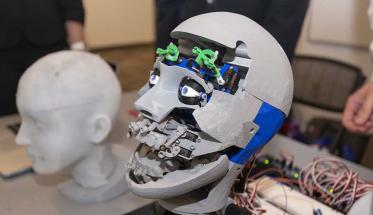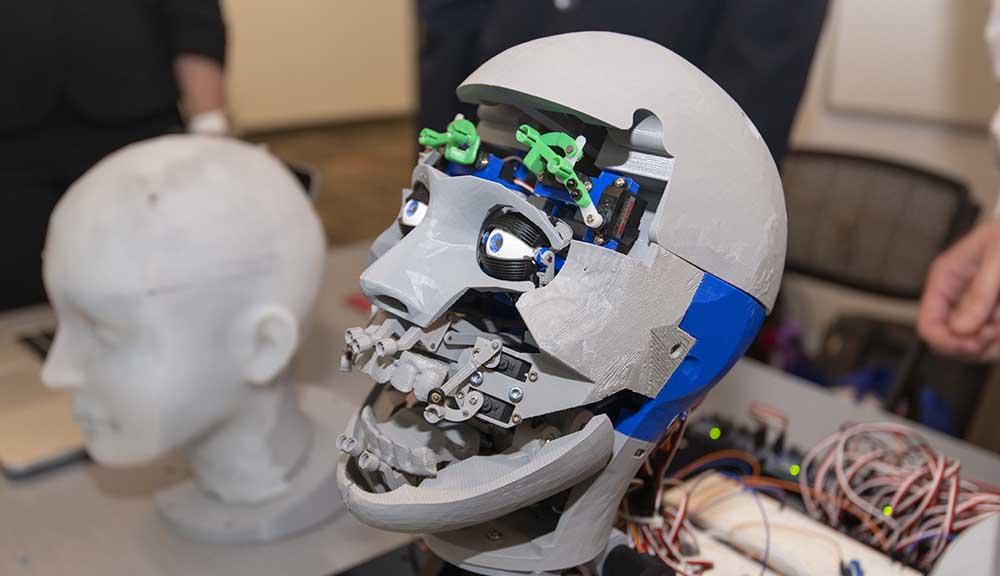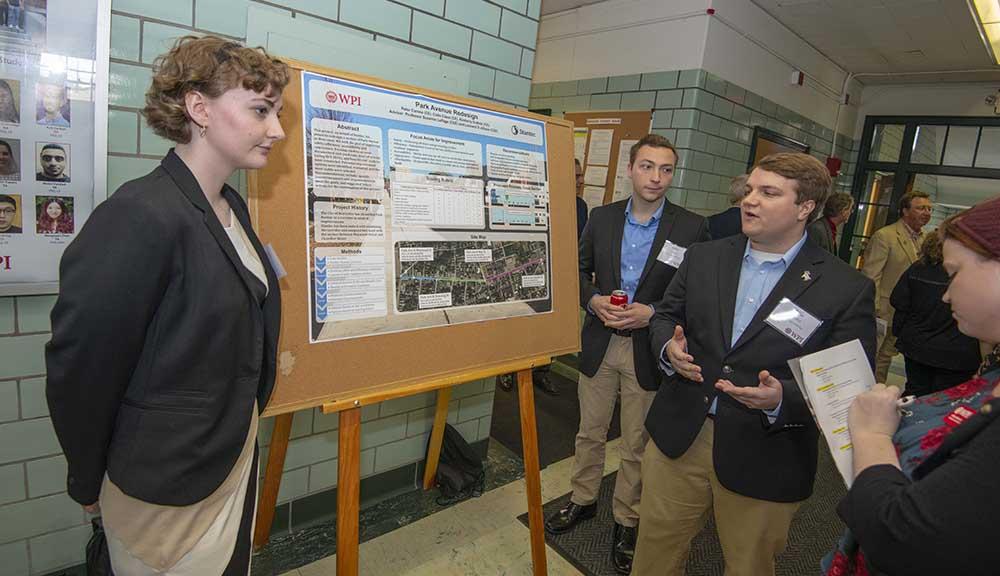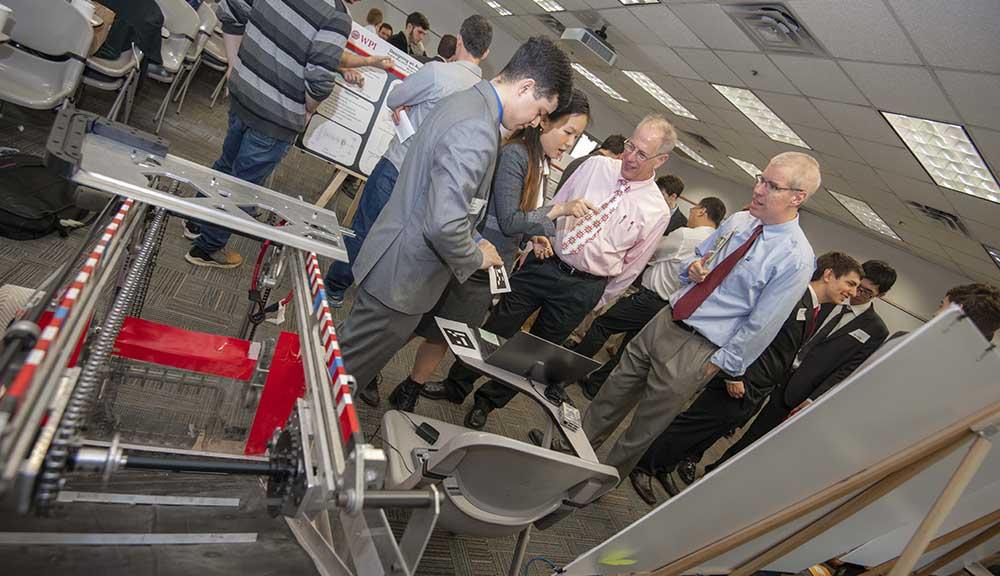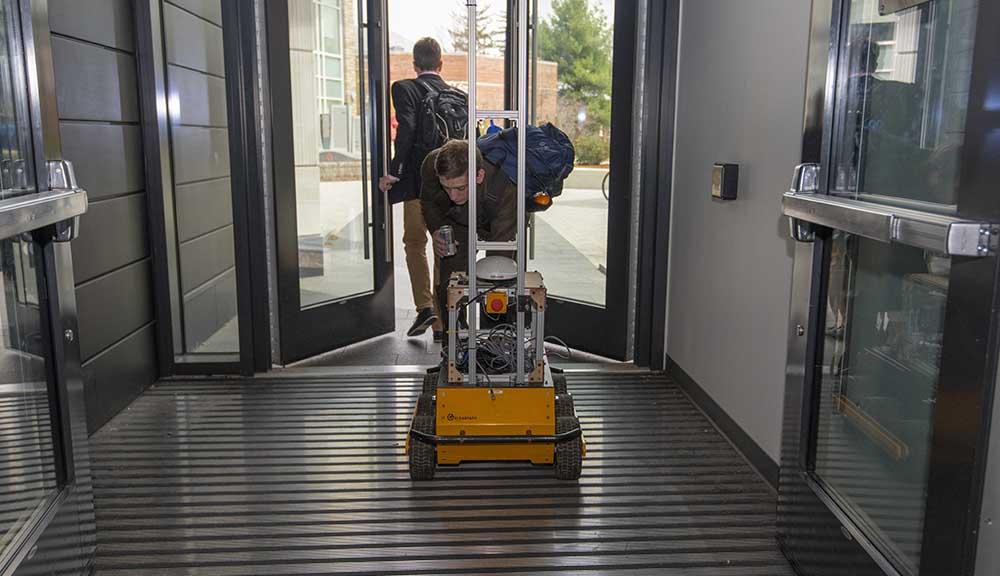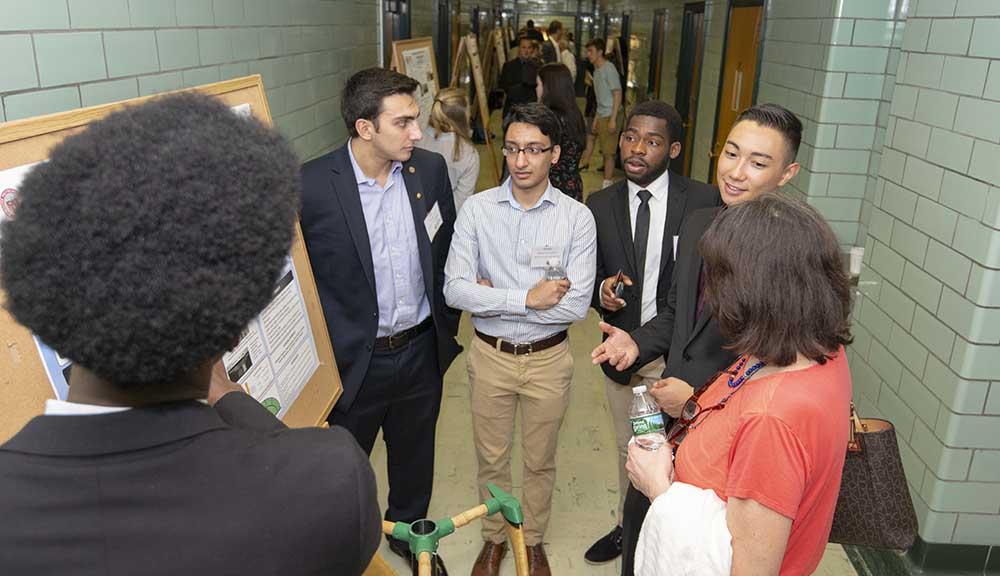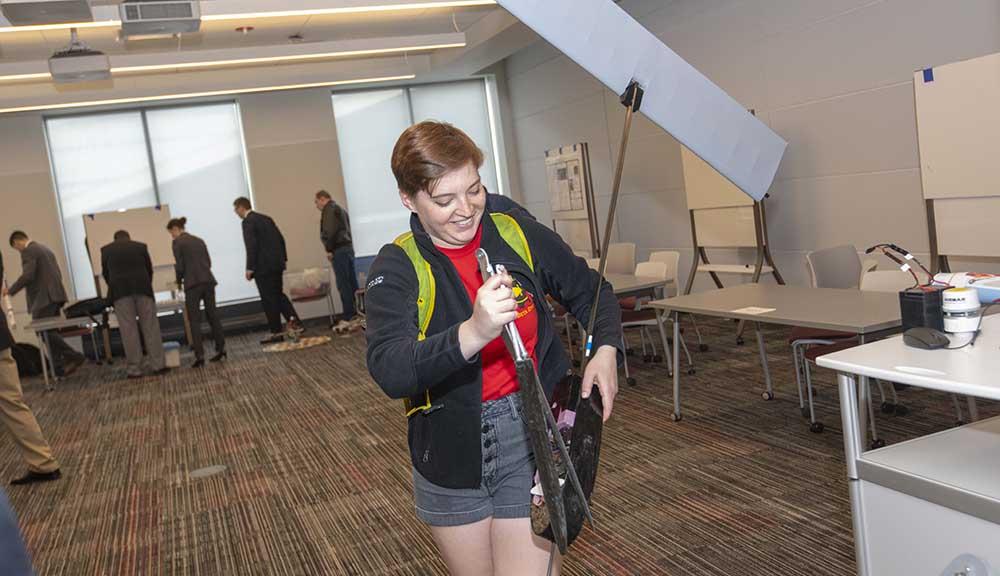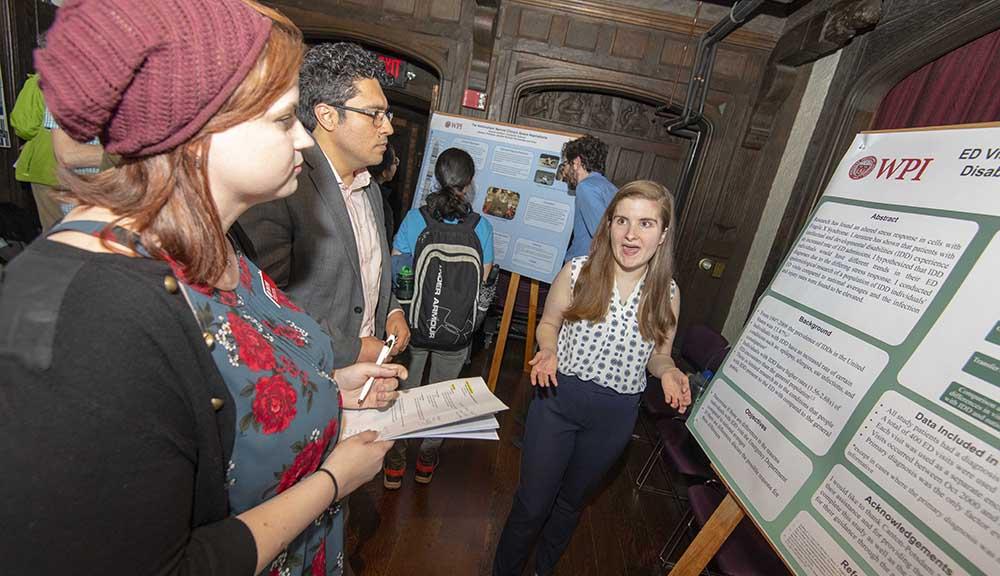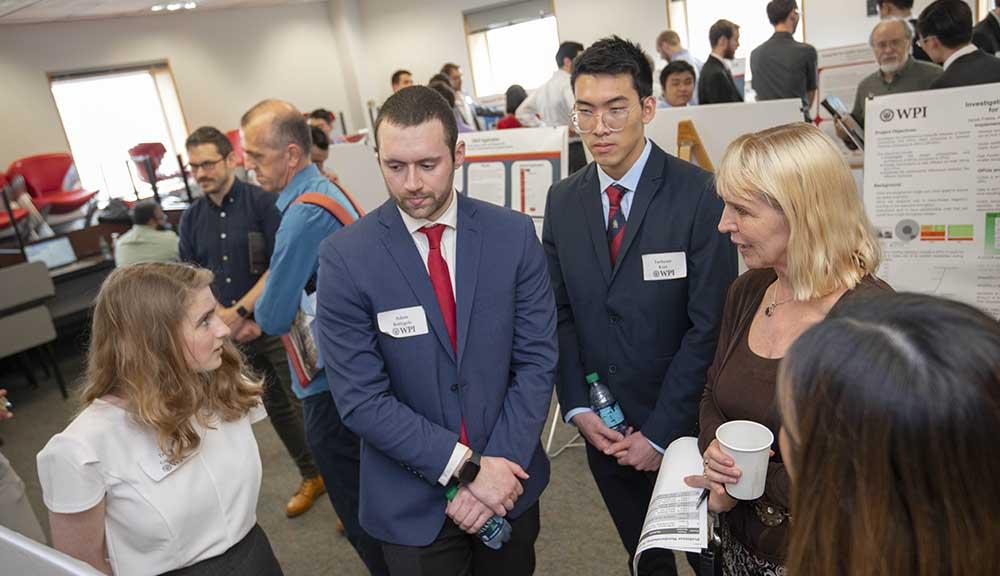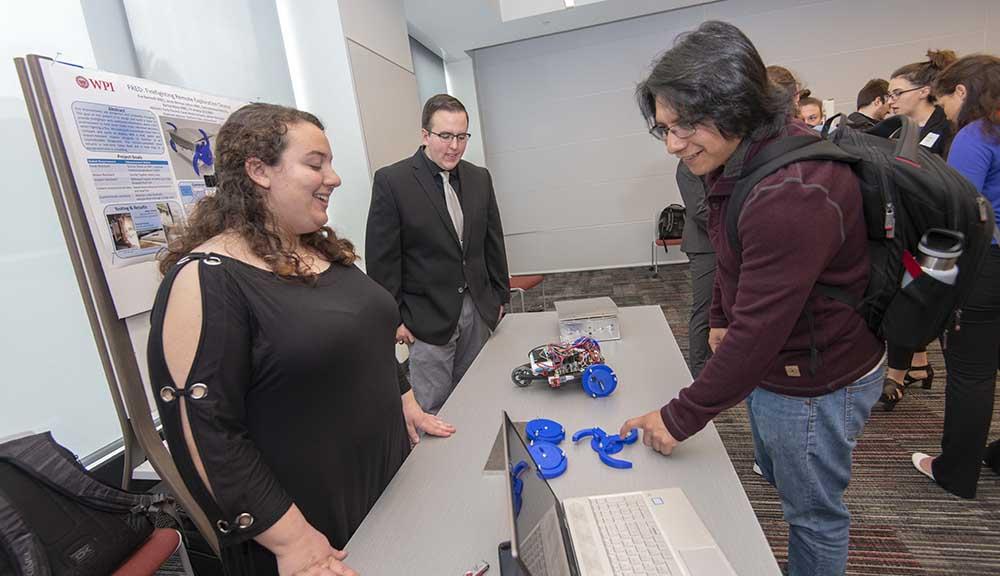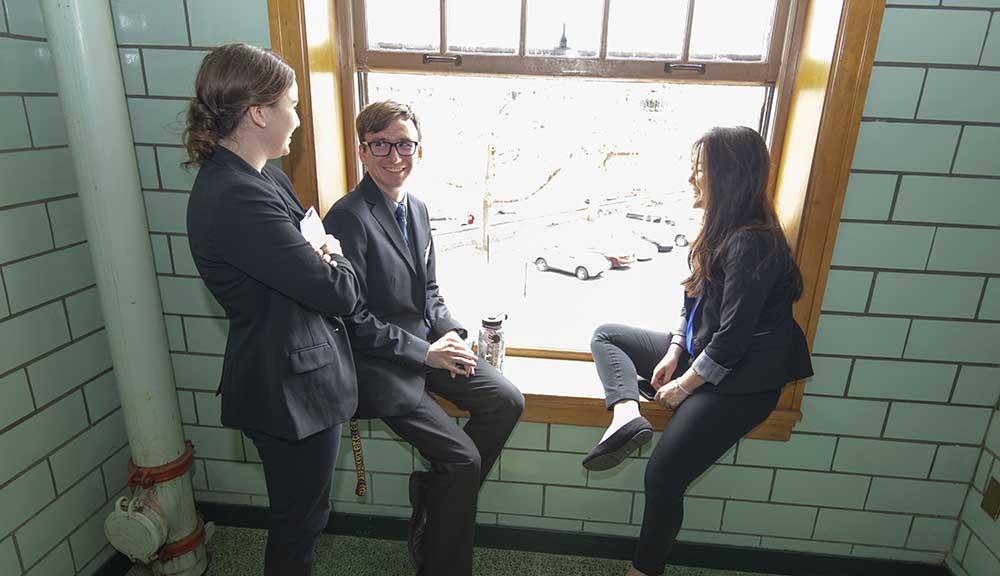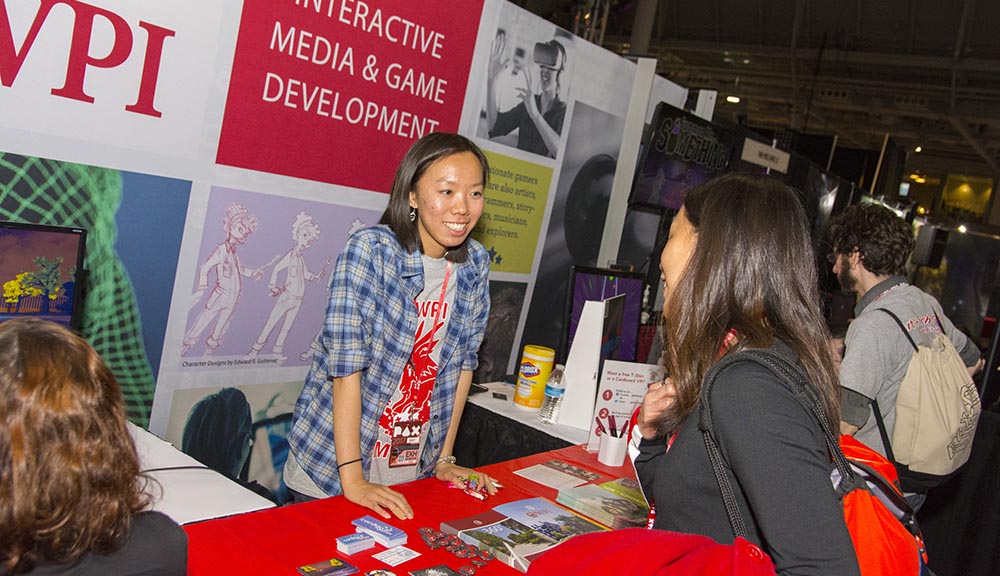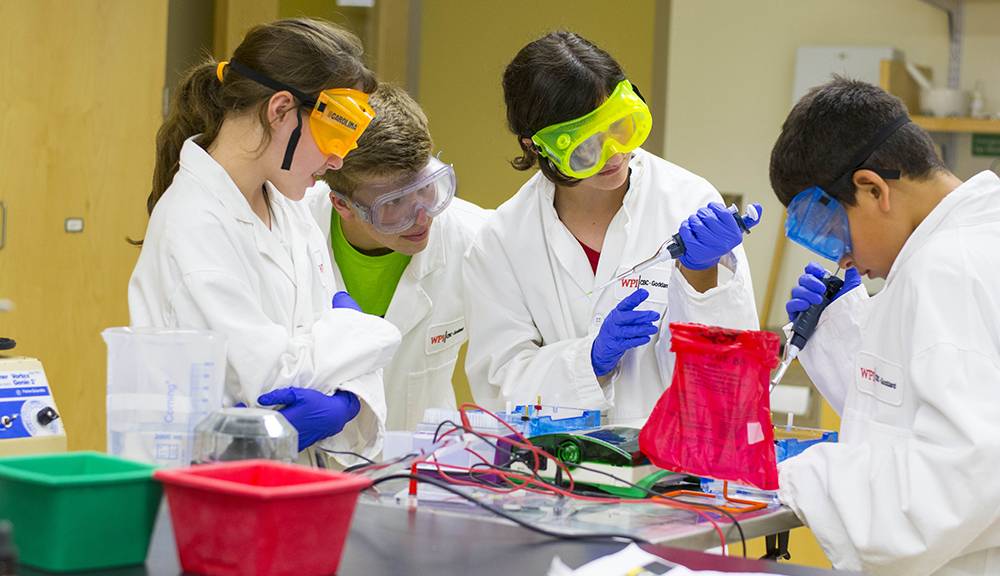Visitors touring campus on Friday, April 19, were treated to a little something extra as WPI became a stage for Project Presentation Day, an annual event where seniors present their Major Qualifying Projects to the community.
It’s WPI’s own version of Willy Wonka’s chocolate factory, minus the terrifying rivers and golden tickets. There’s something new and exciting everywhere you look, with the culmination of a year’s worth of work on display throughout campus.
From revolutions in sports equipment and compostable tableware to virtual reality in tabletop games and engineering design, the students brought new meaning to “Wanna change the world? There’s nothing to it.” Check out a few of this year’s projects.
